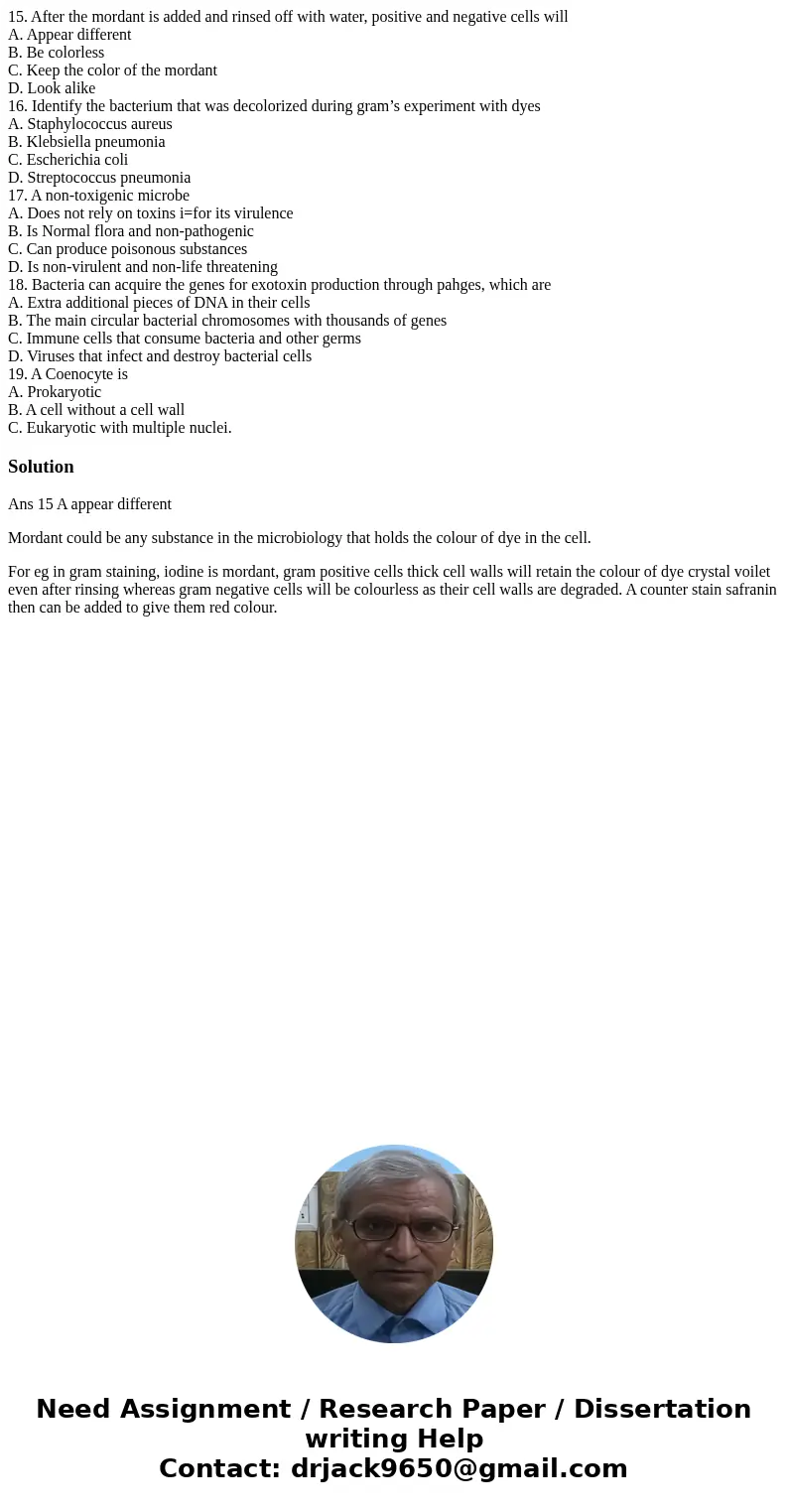15 After the mordant is added and rinsed off with water posi
15. After the mordant is added and rinsed off with water, positive and negative cells will
A. Appear different
B. Be colorless
C. Keep the color of the mordant
D. Look alike
16. Identify the bacterium that was decolorized during gram’s experiment with dyes
A. Staphylococcus aureus
B. Klebsiella pneumonia
C. Escherichia coli
D. Streptococcus pneumonia
17. A non-toxigenic microbe
A. Does not rely on toxins i=for its virulence
B. Is Normal flora and non-pathogenic
C. Can produce poisonous substances
D. Is non-virulent and non-life threatening
18. Bacteria can acquire the genes for exotoxin production through pahges, which are
A. Extra additional pieces of DNA in their cells
B. The main circular bacterial chromosomes with thousands of genes
C. Immune cells that consume bacteria and other germs
D. Viruses that infect and destroy bacterial cells
19. A Coenocyte is
A. Prokaryotic
B. A cell without a cell wall
C. Eukaryotic with multiple nuclei.
Solution
Ans 15 A appear different
Mordant could be any substance in the microbiology that holds the colour of dye in the cell.
For eg in gram staining, iodine is mordant, gram positive cells thick cell walls will retain the colour of dye crystal voilet even after rinsing whereas gram negative cells will be colourless as their cell walls are degraded. A counter stain safranin then can be added to give them red colour.

 Homework Sourse
Homework Sourse